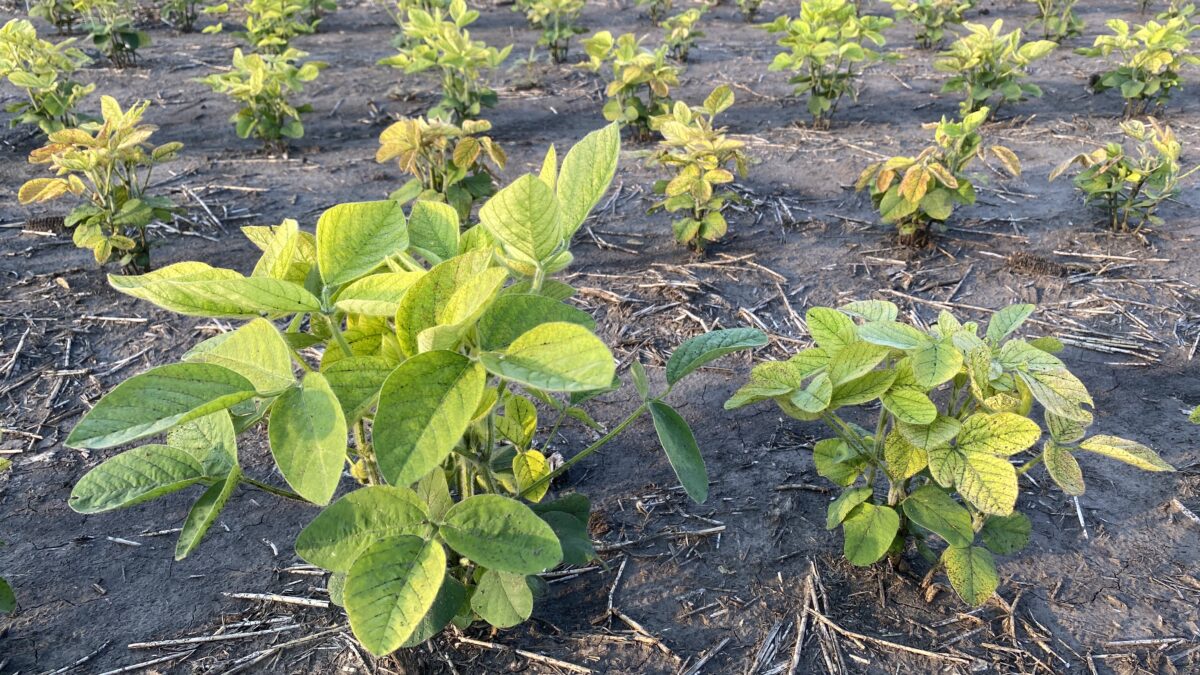Know Your IDC Score

We pride ourselves on having top-notch varieties suited to our farmers’ fields. We select varieties and hybrids not based on how well they’ll help us expand our footprint, but on maximizing yields within our tri-state region. The best way for us to do that is to test them here, under our conditions.
Our IDC program is the only one of its kind in the region. The idea is to, “trust but verify,” which means trusting our genetic suppliers’ data, but verifying our IDC scores versus their data. We don’t always agree, but this helps Peterson Farms Seed make better placement recommendations for our customers.
IDC is a tricky condition, as it’s not something that can be easily predicted from year to year. It occurs when soil conditions won’t allow the plant to take up iron. Iron is very important for keeping plants healthy, and in bad enough IDC conditions, soybeans will remain stunted all season if management measures are not taken.
Management
1. Test your soils
You may have farmed that same piece of ground for the last 20 years, but as we grow more and more corn, we can have residual nitrogen and salts that can cause increased IDC symptoms. Especially after a dry growing season.
2. Know your Score
IDC scores are important! Paying attention to your variety’s score can be the difference between a fast-recovering bean and one that lags all season. If the ground is notoriously ‘hot’ with IDC, stack up your defenses by starting with the IDC score. Genetics are the No. 1 way to combat this issue.
A higher population equals greater root density, which means more chelate and less IDC. In the effort to curb white mold and keep input costs down, soybean-planting populations have trended downward. In addition, taller germplasm, more branching, and narrower planter rows have also brought down how close the plants are next to each other. While it helped remedy some issues, this double-edged sword might also be causing you big losses when it comes to IDC. Don’t be afraid to play with populations a little. Perhaps consider bumping them up with variable rates in areas that consistently have IDC issues. An additional $10 an acre in seed costs is easily made up with recovered yield.
4. Iron Chelate Application
Any application that comes out to $30 per acre (or more) can be a tough pill to swallow. However, with the right timing on the right piece of ground, the added expense might be worth it. Depending on per-bushel market prices, it only takes a few bushels to make up for the cost. On the toughest acres, you could see recovery of all of those bushels, or more.












